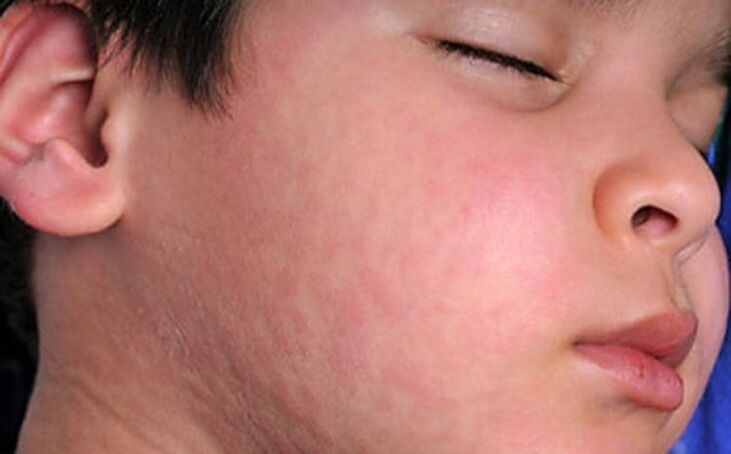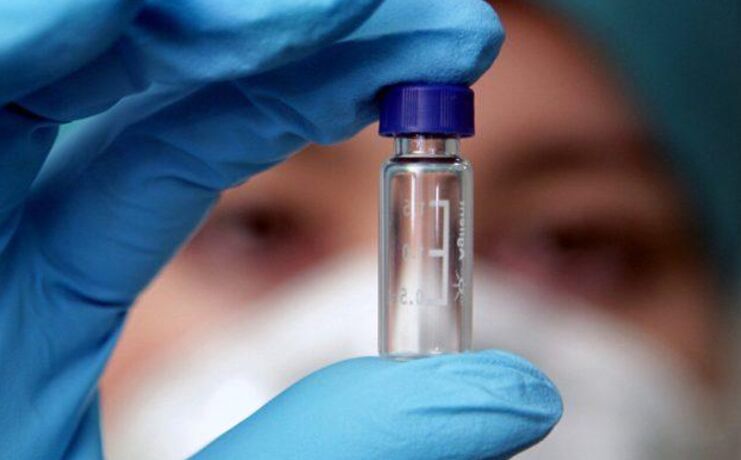
Worm eggs are microscopic in size. Invisible, they can be anywhere - on the ground, in traffic handles, door handles, in a baby sandbox, in our pet's treasure.
How can worm infections be prevented or, if so, dangerous complications avoided?
Symptoms of helminths in humans
No one can consider themselves immune without being infected with worms. Even with the strictest observance of the rules of hygiene. To minimize the risk of infection, it is important to be as informed as possible about the symptoms of helminths in humans, and the prevention and treatment of helminthic infestations.
The most common helminths:
Round worm.Parasites belong to the class of nematodes with roundworms in cross section. The length of the tooth reaches 350 mm, males are smaller. Roundworms are dangerous both in the gut and during migration.
Localization of parasites in the intestine in complex forms can lead to intestinal obstruction, adult roundworms with a risk of asphyxia to the respiratory tract, bile duct obstruction and other complications. The migration phase threatens the penetration of larvae into the lungs and other organs with the development of serious pathologies.
Infection with ascariasis is caused by parasitic eggs that leave the patient's intestines in the feces and reach the invasive stage in the soil.
- Diphyllobotrium latum.One of its representatives is a class of cestodes with a broad tapeworm. Their feature is that they have 3 owners. The main organisms in which worms develop into a sexually mature individual are humans and some animals (cats, dogs, pigs, etc. ). Intermediate hosts for Diphyllobotrium latum are freshwater crustaceans. Intermediate addition - fish (perch, pike, burbot). Extensive tapeworm parasitic larvae - infected with plerocercoids, eat undercooked fish.
Pinworms. These are nematodes, like roundworms, but smaller in size. The length of the female is up to 10 mm, the male - up to 5 mm. Enterobiasis is one of the most common helminthiases. Children are especially sensitive to them.
The most characteristic manifestation of enterobiosis is itching in the anus. This is explained by the fact that women go to the perianal zone to lay eggs. In the folds of the skin, embryos reach the invasive stage within 5-6 hours. Their scratching and subsequent ingestion can cause re-infection.

Ways of infection
Methods of infection with worms are determined by the invasive form of the parasite and the ways in which they enter the host organism.
Most parasitic worms have two infectious forms - eggs (in some cestodes called oncospheres) and larvae. The latter are sometimes called Finns or Cysticerci. The size of the eggs is microscopic, usually a few tens of micrometers. The size of the larvae can reach several millimeters in a few years.
Worms are often transmitted through the mouth.However, some types of parasites can be invaded through the skin or by insect bites. When eggs are swallowed, the embryos in them shed their shells, enter the bloodstream through the intestinal wall, and are carried by the blood throughout the body. Depending on the type of parasite, they can be located in the liver, lungs, heart, pancreas, kidneys, brain and eyes.
When infected with larvae, the localization of the parasite in the intestine is most common. Due to their significant size, larvae cannot penetrate blood vessels and migrate with blood. They remain in the gut, attach to the wall, and grow to sexual maturity, after which they begin to reproduce.
Worm eggs usually leave the gastrointestinal tract with feces. In some cases, for example, with cestodosis, the release of eggs from the intestinal tract can be carried out by fragments of worms - proglottids. They come out of the intestines spontaneously through the anus.

The main types of helminthic lesions
The effectiveness of treatment for helminths in humans depends on how accurately the clinical picture and nature of the lesion infested by the parasites are determined. And they, in turn, depend on the stage of occupation - intestinal or migratory.
Intestinal stage of invasion.In the intestinal phase, the main damage is done to the patient's digestive system, especially the gastrointestinal tract. Worms damage the intestinal mucosa with their suckers. This leads to inflammatory processes and dysfunction of the gastrointestinal tract.
In addition to the absorption of some food by worms, the absorption function of the intestines is also impaired.Digestive capacity of the gastrointestinal tract is reduced due to the release of anti-enzymes by parasites.. All this leads to a lack of nutrients, vitamins and trace elements in the patient's body.
In addition to antibodies, worms secrete other metabolites that play the role of toxins in the host organism. To this is added the decay of the bodies of dead worms. As a result, the patient's body is severely intoxicated.
Some types of parasitic worms can penetrate from the gastrointestinal tract to neighboring organs and tissues - the bile ducts, gallbladder, liver parenchyma and other systems. Adult roundworms, for example, can penetrate the host's respiratory tract with a high intensity of infection. With a large number of parasites, mechanical obstruction of the intestine is possible. This can be observed in both roundworms and tapeworms.
When parasitic worms enter the liver parenchyma, abscesses may develop that require surgery. Perforation of the intestine with the development of peritonitis and the penetration of the contents of the gastrointestinal tract into the abdominal cavity is not excluded. Pancreatitis, cholecystitis and cholangitis can develop due to the harmful effects of adult worms.

migration phase.Due to the possibility of larval embryos penetrating almost any organ, the migration phase of the invasion may pass through the intestinal phase in terms of severity of consequences.
Larvae from eggs in the organs and tissues cause inflammation and infiltrates. If it occurs in the lungs, the invasion manifests itself as bronchitis, pneumonia, asthmatic syndrome.
When parasitic eggs penetrate the brain (such as cestode oncospheres), single or multiple vesicular fins form in its tissues. Their size can reach the size of a tennis ball. Due to the proximity of cysts to brain tissue, their surgical removal is associated with a high risk of rupture of the purulent bladder and the development of secondary infection.
Intoxication of the patient's body with metabolites of live worms and toxins caused by the decay of their dead bodies causes allergic reactions. Their result is fever, skin manifestations, headache and dizziness.

Symptoms
The symptoms of helminth infection depend on many factors. There are manifestations that are characteristic of a particular type of occupation, but less of them.Most parasitic worms present with symptoms similar to those of other diseases.This makes it difficult to diagnose. These common symptoms include:
- Complete deterioration of the state, physical and mental weakness.
- Nausea, vomiting.
- Fecal incontinence, constipation and diarrhea.
- Anxiety, heaviness, abdominal pain of various localizations.
- Up or down appetite.
- Weight loss without explanation. Including against the background of increasing food intake.
- Itching in the perianal area, you feel something moving there.
- Allergic manifestations in the form of skin rash.
- Cough.
- Difficulty breathing, asthmatic syndrome.
- Bruxism. Grinding teeth during sleep is typical for children with itching in the anus.
- Increased anxiety, nervousness, insomnia, chronic fatigue, depression.
- Headache.
- High fever, often subfebrile. But sometimes it rises to high values.
- Dizziness.
In the early stages of the invasion, the symptoms may not be present at all or may be so insignificant that they are not given much attention. In the future, as the intensity of the disease increases, the symptoms become more pronounced.
Symptoms of helminths in human blood can vary depending on the organ in which the migrating embryos are located.If it is found that the site of localization is the lungs, the patient may have a fever and respiratory problems.In these cases, the infection is usually accompanied by a cough - with unproductive or orange sputum. The latter indicates that the larvae damage small blood vessels in the lungs.
Symptoms of helminths are accompanied by nausea, vomiting, heaviness and pain in the abdomen, profuse salivation, stool disorders, weight loss.
Attention.During a severe liver invasion, abscesses may develop with the discharge of purulent contents into the abdominal cavity. This development of the disease threatens the patient's life.

Medication treatment
Treatment of the invasion depends on many factors. The main ones are the type of parasitic worms, their localization, the stage of the disease (migration or intestinal), the intensity of the infection, the patient's condition. But in any case, the disease must be diagnosed before treatment.
The most common diagnostic test for infections caused by parasitic worms is a stool test. If it is not sufficient to make a diagnosis, a general, biochemical and / or enzyme immunoassay is performed.Equipment diagnostics can also be used - ultrasound, X-ray, MRI, etc.A doctor who has a complete picture of the disease prescribes antihelminthic drugs.
Important.Treatment with drugs that contain a strong active ingredient can cause side effects. This limits the use of drugs for certain patient categories. Especially for pregnant and lactating women, children under a certain age, patients with certain viral and infectious diseases.
Various drugs are prescribed to control localized nematodes in the intestine and to destroy extra-intestinal nematodes.
Important.Often two courses of treatment are carried out with an interval of 2-3 weeks. This is because most antiviral drugs only kill adults. Their larvae and eggs remain untouched. After the incubation period, they may appear a new generation of worms, the destruction of which will require a second course.

Use of folk remedies
Folk remedies take longer than drug treatment. However, this relative deficiency is compensated by the softness of herbal remedies and the absence of side effects.
There are many herbs that have antihelmintic effects - nettle, tansy, celandine, wormwood, horsetail and many others. Antiparasitic plants contain components that are toxic to cestodes, nematodes and trematodes and usually have a bitter taste.
Many antihelminthic herbs also have antiseptic and antibacterial effects. Their effectiveness depends on the proper preparation and application of dosage forms. Here are the most popular herbal remedies and products. But you have to understand that this is only a small part of what actually exists.

Pumpkin seeds
It is no exaggeration to say that pumpkin seeds are the most popular anthelmintic drug. They contain cucurbitin, which is very effective against nematodes and cestodes. Pumpkin seeds can be used not only for treatment but also for prevention.
Most of the cucurbitin is in the film between the nucleus and the shell.Therefore, it is better to consume the seeds unpeeled. For treatment you need to eat 300 g of seeds at a time. For prevention, 100 g is enough for adults and 70 g for children. From pumpkin seeds you can prepare solutions for enemas, which are effective against worms localized in the large intestine.
garlic
Garlic is a universal medicine that is not inferior to pumpkin seeds in terms of effectiveness. Contains phytonutrients and essential oils that have a depressant effect on all types of parasitic organisms. Garlic is very active against nematodes, especially ascaris.
soda
Parasitic worms do not tolerate alkaline conditions well, so baking soda is an effective remedy against them. It can be taken orally, but the greatest effect of sodium bicarbonate is obtained by preparing an enema solution from it. It should be used for localization of nematodes or cestodes in the large intestine.
bal
There is no need to advertise honey as a medicine, but not everyone knows that it is effective as an anthelmintic. For this purpose, you need half a teaspoon 9 times a day. It is necessary to abstain from food during treatment during the day.
The next day, only fresh vegetables are allowed. As honey has no contraindications and side effects, it can be used in the treatment of young children. It is recommended to give them a glass of water sweetened with a teaspoon of honey.

root juice
Even official medicine, which is sometimes very serious about folk remedies, admits that the juice of the root has an anthelmintic effect. The amount of juice taken at one time is not limited by any requirements, everything must be within reason.
Castor oil
Many species of nematodes and cestodes are localized in the intestine. Some laxatives work well against them, especially the familiar castor oil. This recipe is suitable for adults. Mix 80 ml of cognac with castor oil and take a sip before going to bed.
The procedure is performed within 3 days. Children are given a little sweet drink (compote, juice, tea) at 1-2 o'clock in the morning, and after half an hour 15-30 g of castor oil.
The result
If the parasitic worms do not show themselves clearly (for example, in the form of whole individuals or fragments of them in the feces), it is almost impossible to independently determine the presence of the invasion. Therefore, you should not hesitate to contact an infectious disease specialist at the first appearance of symptoms that may indicate an infection.
He has in his arsenal one hundred percent probability of occupation. Delayed contact with the clinic or self-diagnosis based on self-diagnosis can unfortunately lead to death.






































